The tiger is the largest of the world’s big cats and this magnificent creature, with its distinctive orange and black stripes and beautifully marked face, has a day that is dedicated to it. This was first celebrated in 2010 and was founded at an international summit that had been called in response to the shocking news that 97% of all wild tigers had disappeared in the last century, with only around 3,000 left alive. Tigers are on the brink of extinction and International World Tiger Day aims to bring attention to this fact and try to halt their decline. Many factors have caused their numbers to fall, including habitat loss, climate change, hunting and poaching and Tiger Day aims to protect and expand their habitats and raise awareness of the need for conservation. Many international organisations are involved in the day, including the WWF, the IFAW and the Smithsonian Institute.
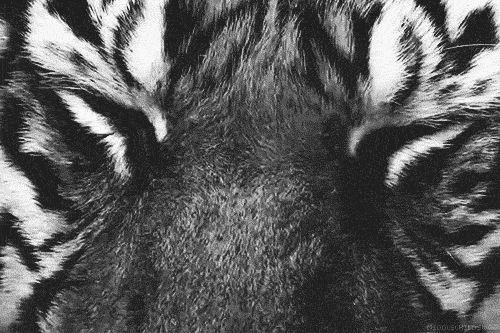
Word of the Day
| |||
| Definition: | (noun) A model or brand of a manufactured product, especially an automobile. | ||
| Synonyms: | brand, trade name | ||
| Usage: | The public relations department argued that the prestige consumers associated with marque of the car was even more important than the quality of the product | ||

Idiom of the Day
have (hand)writing like chicken scratch— To have very poor, messy, and/or illegible handwriting, likened to the marks made in the dirt by a chicken. |
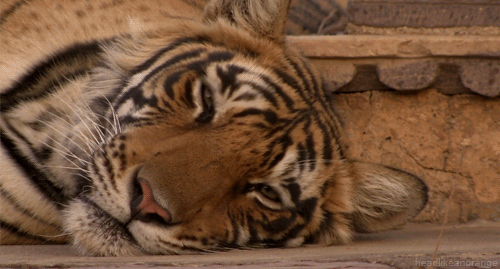
History
National Aeronautics and Space Administration (NASA) Established (1958)
NASA is an agency of the US government charged with aeronautics research and the nation's civilian space program. During its history, it has been responsible for manned trips to the Moon, orbiting observatories, and unmanned programs that explored other planets and interplanetary space. Today, its goals include improving human understanding of the universe and establishing a permanent human presence in space
Alexis de Tocqueville (1805)
Tocqueville was a French political scientist, historian, and politician. Born into an aristocratic family with ties to the king, his future in government was jeopardized by a revolution in 1830. To distance himself from the trying political situation at home, he embarked on a government-sanctioned mission to the US. Out of it came his best-known work, Democracy in America—the first analytical study of the strengths and weaknesses of US society.
Gilroy Garlic Festival
This event is a celebration of garlic in the California town, located in Santa Clara County, that calls itself the Garlic Capital of the World. The claim is made because 90 percent of America's garlic is grown and processed in the area. The highlight of the festival is Gourmet Alley with dozens of food booths that use eight tons of garlic in preparing various garlic-flavored dishes, including garlic ice cream. Other events are a Great Garlic Cook-off and Recipe Contest, arts and crafts exhibits, musical entertainment, and a barn dance.
Does It Pass the 'Smell Test?' Seeking Ways to Diagnose Alzheimer's Early
Alzheimer's researchers are looking to our noses and our eyes for early signs of disease.READ MORE:
1754 - The first international boxing match was held. The 25-minute match was won when Jack Slack of Britain knocked out Jean Petit from France.
1773 - The first schoolhouse to be located west of the Allegheny Mountains was built in Schoenbrunn, OH.
1874 - Major Walter Copton Winfield of England received U.S. patent for the lawn-tennis court.
1957 - Jack Paar began hosting the "Tonight" show on NBC-TV. The name of the show was changed to "The Jack Paar Show." Paar was host for five years.
1963 - Peter, Paul and Mary's "Blowin' In The Wind" was released.
1985 - General Motors announced that Spring Hill, TN, would be the home of the Saturn automobile assembly plant.
2005 - Astronomers announced that they had discovered a new planet (Xena) larger than Pluto in orbit around the sun.
DAILY SQU-EEK


Pictures of the day

The chequered skipper (Carterocephalus palaemon) is a butterfly of the family Hesperiidae named for its upper sides, which are dark brown with a dusting of orange scales at the base of the wings and golden spots. It is widely distributed in northern and central Europe, and its range extends across Asia and Japan, and into North America.

Old Guard
Photograph by Javier Eduardo Alvarez, National Geographic
“Hundreds of old cypresses guard the perimeter of Lake Camécuaro and its turquoise-colored, crystal clear water,” Javier Eduardo Alvarez writes of this photo he made of the small Mexican lake, popular for its picturesque beauty. “This place is magical.”

knit
knit
knit
knit
knit

crochet
crochet
crochet
crochet, vintage
crochet

RECIPE

CROCKPOT RECIPE

SWEETS

CRAFTS
Popsicle Bracelets!
For this project I used:
- Popsicle sticks (bought the industrial strength size bag from Wal-Mart because this project might go in future directions)
- Drinking glass (for forming- use a glass with a top opening that is slightly smaller than you want your bracelet to end up)
- Emory board or sand paper
- Acrylic paint
- Stick on jewels (for bling)
- Mod Podge

The instructions in the magazine called for allowing the popsicle sticks to sit in water overnight. Once they have become completely saturated, it was simple enough to curve them to fit into the top of a drinking glass.

I found that I still had to work the wood, warming it with my fingers, to make it pliable enough to fit into the top of the glass without splitting. My success rate was about 60%.

I found that I still had to work the wood, warming it with my fingers, to make it pliable enough to fit into the top of the glass without splitting. My success rate was about 60%.
So, I tried it again, but this time I used a pan of water and boiled the popsicle sticks for about 30 minutes and then allowed them to sit in the hot water for another 30 minutes. This time my success rate for unsplit popsicle sticks was about 80%. Either way works well and if you aren’t as picky as I am, your success rate might be better. The sticks are cheap, so I’m okay with a bit of error.

Once the sticks are formed in the glasses, I allowed them to thoroughly dry overnight and then easily removed them from the glasses.
I then used an emory board to sand them so that all edges and paint surfaces were smooth.

Now for the fun part!! I used my acrylic paints to paint in designs. I wanted them fun and colorful. Re-wetting the sticks with paint will cause them to open up a bit (hence the reason that I used a glass with such a small opening).


Another option for the bracelets at this point would be to decoupage using scrapbooking paper. Or you could quill it, or apply fabric, or sequins, or pompoms, whatever your crazy mind or your ingenious children come up with.
My final touch was to add stick on jewels that I found in the discount bin at the craft store, and then add a final protectant coat of Mod Podge.
Make your own mod podge at a fraction of the cost!
Preview by Yahoo
| |||||

CHILDREN'S CORNER ... game
Make a mini bowling game
with pencil erasers and marbles


PUZZLE

QUOTE

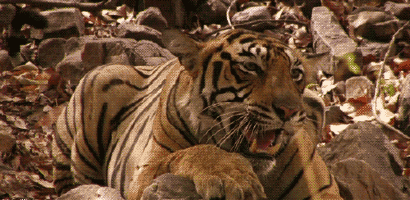


CLEVER
Stitches Dictionary 4


EYE OPENER
thanks, lyn
THE ORIGIN OF THE PHRASE “IN THE LIMELIGHT”
todayifoundout
The origin of the phrase “in the limelight” means “at the center of attention,” but back in the day “in the limelight” meant, well, being in the limelight.
“Limelight,” which is also known as “calcium light,” was used as stage lighting for years after being discovered by Goldsworth Gurney in the 1820s. Gurney was employed by the Surrey Institute as a lecturer in chemistry and philosophy. On the side, he did a bit of experimenting of his own. He invented an “oxy-hydrogen blowpipe,” which works by introducing a jet of oxygen and hydrogen to a flame, making it extremely hot. He found that introducing a small chunk of lime (the stone, not the fruit) to the flame resulted in a blinding white light that could be visible for miles.
It was after this that Thomas Drummond, who is often credited with inventing the light (so much so that it’s sometimes called “Drummond Light”), saw a demonstration by Michael Faraday and thought that the bright light would be useful in surveying. At the time, it’s thought he was doing a surveying project measuring the peaks of Ireland’s mountains. However, given the often dreary weather, it was difficult to see the peaks at times. Instead, a limelight would be lit at the top. Drummond reported that he could see the light from as far away as 68 miles, which helped the surveying process go much more smoothly.
In these days before electricity, a bright white light was something many people wanted to get their hands on. It was particularly alluring to the theater. Limelight was first used in a public theater in 1837, where the technology was employed at Covent Garden in London. By the 1860s, the use of limelights in theaters was widespread. Before this, theaters were typically lit by gas lights which were particularly dim; to make up for it, hundreds of gaslights were used to light a theater. As you can probably imagine, this resulted in a huge fire risk.
With its bright white light, it took far fewer “limelights” to light the stage, reducing the fire risk. Limelights were typically used for lighting the “front and center” of the stage as well as simulating sunlight and moonlight. One of the drawbacks of using limelights was that someone had to tend to them at all times, adjusting the block of limestone and checking the oxygen and hydrogen cylinders fueling the flames.
By the end of the 19th century, electric lights were starting to be used and limelight fell out of favor. However, it’s easy to see how the expression came about: limelight was used at the front and center of the stage, meaning a person standing in the limelight would be the center of attention. Despite theaters moving to electric lights, “limelight” remained the way to describe someone who was front and center. (You can see current words and phrases outlasting their “real” use even today—for instance, when was the last time you actually “hung up” a phone? Soon, I imagine physically “rolling up” a window will also go the way of the Dodo, yet we’ll still likely use the phrase for many decades to come.)
As for the first time the word was used in the way we use it today, rather than in the literal lighting sense, that can be traced to a 1902 article in the New York Times:
William S. Devery was in the limelight last evening. Tens of thousands of people of the district crowded the streets in the neighborhood and shouted the name of the ex-Chief of Police of New York.
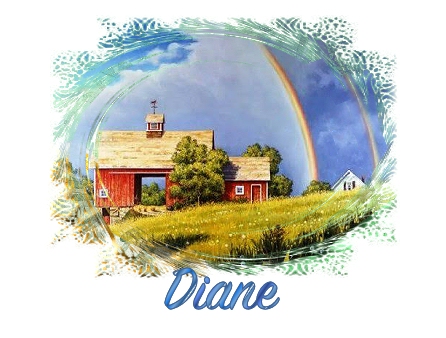






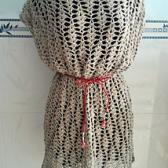













No comments:
Post a Comment